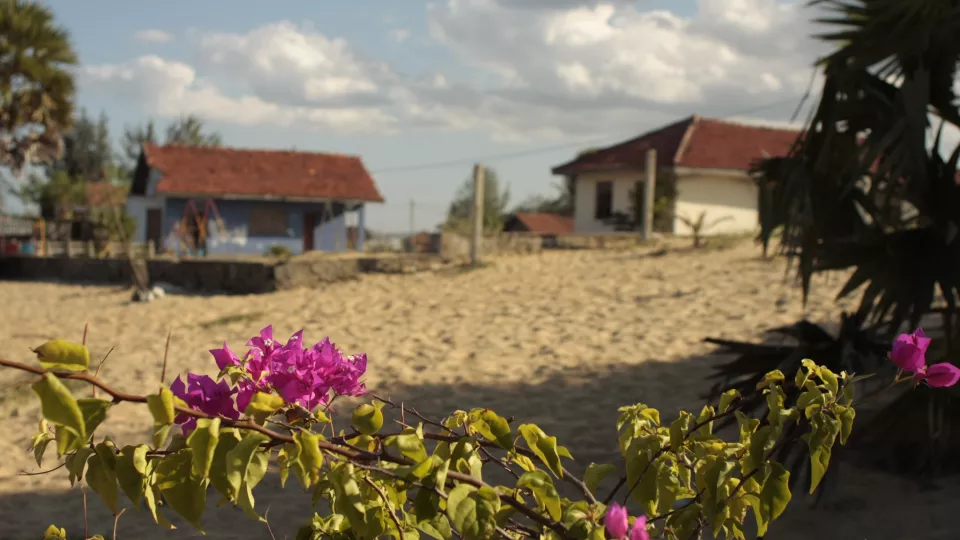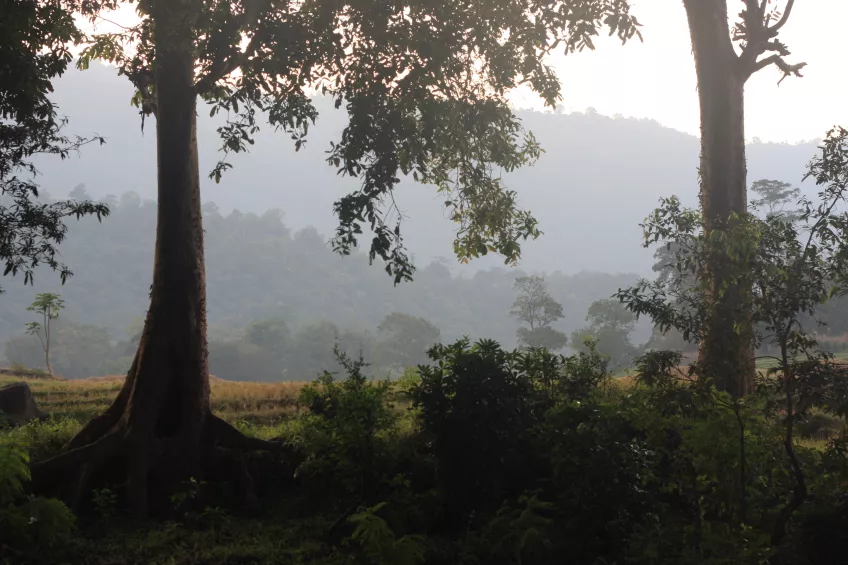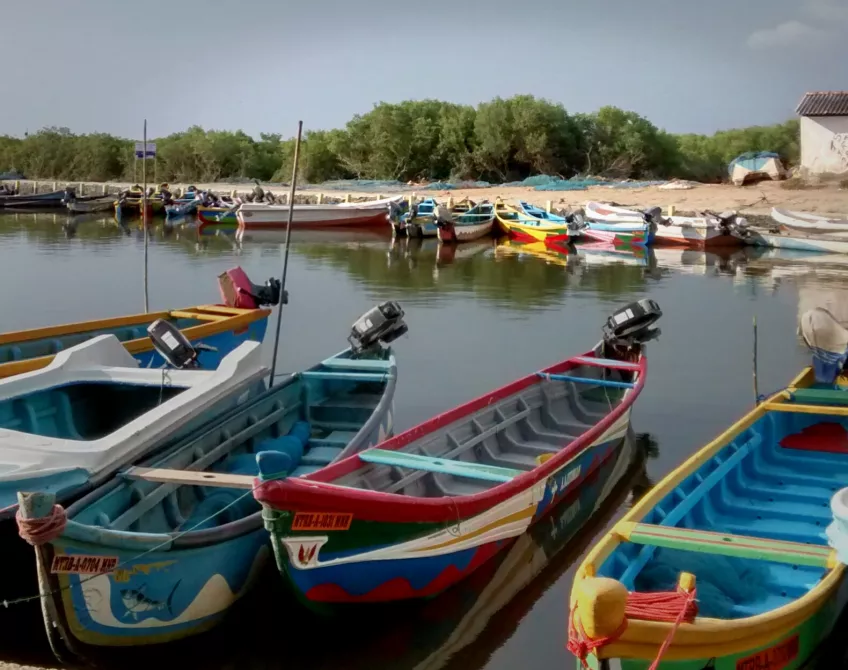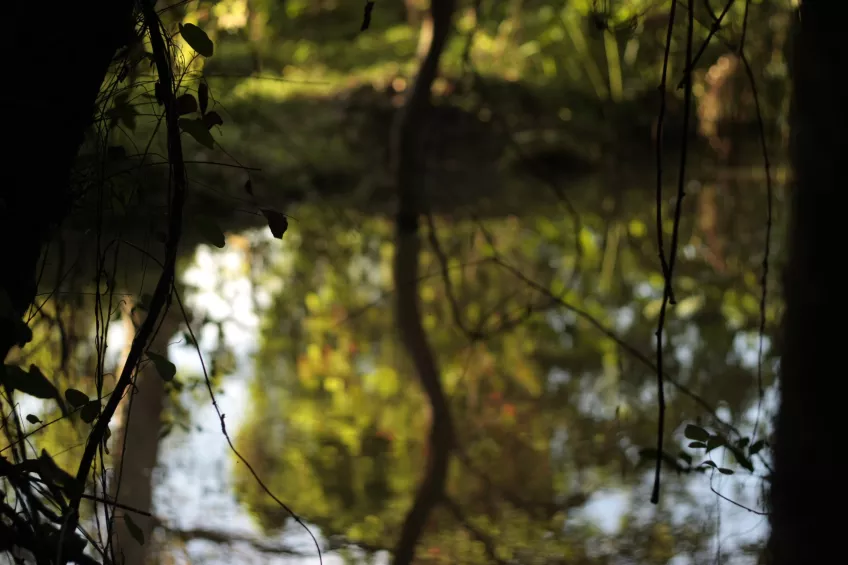He says that, in a warming and increasingly unequal world, more and more people are on the lookout for integrated, holistic, solutions that can move beyond the siloes of social or environmental sustainability. In this context, he explains, there are tendencies, even in research, to assume that green is good, and that green is fair. Against this backdrop, nature based solutions to climate change have risen to prominence as the go to approach for delivery of win-win solutions when it comes to social change and empowerment of vulnerable groups.
A desire to investigate whether nature based solutions actually can deliver multiple social benefits beyond environmental sustainability made Stephen Woroniecki pursue this question in his PHD-studies. Last year, he led an interdisciplinary team in Sri Lanka in an attempt to discover if there are any substance to these claims.
– To me, there is a merit in examining this whole area, because nature-based solutions – of which ecosystem-based adaptation is a major forerunner – are increasingly being highlighted by donors, policy-makers, programmers, and researchers alike as an integrated, holistic alternative to mainstream approaches, that is beleived to lead to more socially-just, and sustainable outcomes.
He explains that this rise to prominence of these claims can partly be explained by the fact that ecosystem based adaptation allows for a more holistic approach to social and environmental sustainability than many technological or infrastructural alternatives since they are adaptable to specific conditions and livelihoods, and are participatory, and inclusive of local priorities and knowledge.
– Through my research in Sri Lanka, I wanted to understand how ecosystem-based climate change adaptation and disaster risk reduction interventions were being implemented, and how they would impact on the empowerment of society’s vulnerable groups.
His says that Sri Lanka is an apt location for this particular research, because ecosystem-based alternatives, though not explicitly labelled as such, are cited by both resource-users and policy-makers alike as a cornerstone of climate adaptation interventsions. As a small island, there is also a diversity of landscapes, climate impacts, and local conditions to be found close to each other. Sri Lanka is a predominantly rural society, where economies are highly connected to the reliable provision of ecosystem services (like paddy farming, mangrove fishing, and horticultural home gardens).
Four Research Themes
In his research, Stephen Woroniecki has focused specifically on three Sri Lankan projects that are, or have been, using ecosystem based climate change adaptation interventions:
Rehabilitation of ecological water tank cascades in Kurunegala – a dry zone in Sri Lanka that has been affected by floods and droughts, and which has not benefited from large-scale irrigation infrastructure; coastal ecosystem management in Mannar, since Western and Eastern coasts are affected by coastal erosion and storm surges, and catchment conservation and land restoration in Walapane, Nuwara Eliya since highland communities are affected by soil erosion, water contamination, and landslide risk.
– So far I have identified four key issues that are emerging across all of these projects: inclusion, politics, resistance and dependency.
In terms of inclusion, he found that not everyone was included in how project activities were planned and implemented, across all of the projects. Often it was most vulnerable groups that were not included.
Other examples centered on politicization: in some of the projects, such as the one focused on restoring water tanks in Kurunegala, he found that the process for awarding contracts was politicized, where some villagers tended to position themselves closer to the project and therefore secure construction work. Meanwhile, in the catchment conservation and land restoration project in Walapane, there was also a tendency for already resourceful villagers to secure project benefits by virtue of positioning themselves closer to project staff.
– Through no explicit fault of the project staff in any of the projects, this means that without concrete inclusion mechanisms in place, vulnerable people may inevitably fall off the radar if they are less able to voice their entitlement to the immediate benefits arising from taking part in an ecosystem based adaptation project.
Stephen Woroniecki says that his research highlights that even so-called ‘sustainable’ adaptation alternatives, such as coastal forest belt protection, or the greening of farms in watershed catchment areas, can become arenas for political action in various ways, and without special recognition and support for minority voices, can end up reinforcing existing disparities and power relations.
Increased Awareness and Understanding of Societal Change
He sees it as key that organisations and researchers involved in implementing these type of projects have an understanding of how particular groups benefits from relevant services, by way of identifying the particular ways that access is given to particular groups.
– By focusing on social structures as well as environmental benefits, it is brought to the fore how access to resources, networks, and opportunities, has consequences for peoples’ ability to become empowered. One example is the way in which social structures condition the ways that men and women have access different types of assets.
One unexpected finding was that empowerment can emerge, not from taking part in, but by actively resisting and organising against projects. And resistance, says Stephen Woroniecki, has consequences, both for participation in project activities, and more broadly because the resistance itself becomes a stepping stone for people to achieve societal goals.
– For instance, in the water tanks restoration project, people organised collectively in order to resist particular parts of the project plan. In so doing, they were able to increase their relative power at the district government level. They also pushed for new additions to the project, like a road across the top of the reservoir levy for example.
A major problem with all of the projects, as he sees it, is that they are not addressing broader problems facing vulnerable groups in Sri Lanka today, such as wide spread youth unemployment, and the fact that some governmental institutions may not be best placed to address people’s concerns and priorities.
– Organisations coming into a community need to base their ecosystem based projects on local needs and resources, and use the villagers’ knowledge of how to manage their own environment as a starting point. Above all, there needs to be an understanding that interventions, no matter how holistic, can never be a substitute for targeted social action, he says.
According to him, the three projects have all succeeded in involving the community in adapting their environment to a changing climate, but tellingly, none of them have fully managed to create the added benefits of participation and empowerment on a structural level.
So, going forward, he would like to see awareness of project planners of the comparative advantage of climate adaptation projects amidst wider initiatives to create lasting societal and economic change, especially in their abilities to meet vulnerable people’s specific needs, strengthen democratic processes and economic opportunities.
– We know from existing research that the resources and benefits provided by ecosystems are just one of many components required for social development. More important is to build awareness around issues of inclusion and understanding where opportunities may lie in projects for vulnerable groups to take greater roles, strengthening their voices in decision-making processes, and allowing local priorities and knowledge systems a fair place at the table, he concludes.
Research Methods
Stephen Woroniecki used a mixed-methodology approach, comprising analysis of focus groups, observation, participatory activities, and semi-structured interviews. He complemented this with a household survey to identify different livelihood groups and trace their relationships with institutions and ecosystem services. The environmental component of the study was derived through secondary literature and expert interviews.




